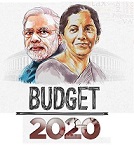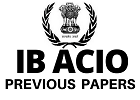sponsored links
The Cabinet in August had decided to set
up an Alternative Mechanism to fast-track consolidation among public
sector banks to create strong lenders. This panel comes less than a week after the government announced a Rs2.11 trillion bank recapitalisation plan for public sector banks weighed down by bad loans, seeking to stimulate the flow of credit to spur private investment.
 The government has also exempted consolidation among PSBs from the scrutiny of competition watchdog, the Competition Commission of India. This exemption will cover all cases of reconstitution, transfer of whole or any part of nationalised banks. The exemption will be available for 10 years.
The government has also exempted consolidation among PSBs from the scrutiny of competition watchdog, the Competition Commission of India. This exemption will cover all cases of reconstitution, transfer of whole or any part of nationalised banks. The exemption will be available for 10 years.About Bank Mergers :
The idea of bank mergers has been around since at least 1991, when former Reserve Bank of India (RBI) governor M. Narasimham recommended the government to merge banks into a three-tiered structure, with three large banks with an international presence at the top.
In the year 2014, the P. J. Nayak panel suggested that the government either merge or privatize state-owned banks. The government hopes that state-owned banks will achieve economies of scale and operational efficiency, while managing risks in a better way after merging.
The move to create large banks by merging aims at
meeting the credit needs of the growing Indian economy and building
capacity in the PSB space to raise resources without dependence on the
state exchequer.
Merging will also help
the banks to deal better with their credit portfolio, including stressed assets.
Merger prevents multiplicity of resources being spent in the
same area and strengthens banks to deal with shocks.
At present, there are 21 Public Sector
Banks. In April this year, India’s largest bank, State Bank of India (SBI) had
absorbed five of its associate banks and Bharatiya Mahila Bank, marking the first consolidation move in the sector following the bad loan crisis. This merger has reduced the number of state-controlled banks to 21 from 26. SBI is
now a single bank with about 24,000 branches, over 59,000 ATMs, 6 lakh
PoS machines and over 50,000 business correspondents.
sponsored links










 English Vocabulary from
English Vocabulary from











0 Responses:
Post a Comment